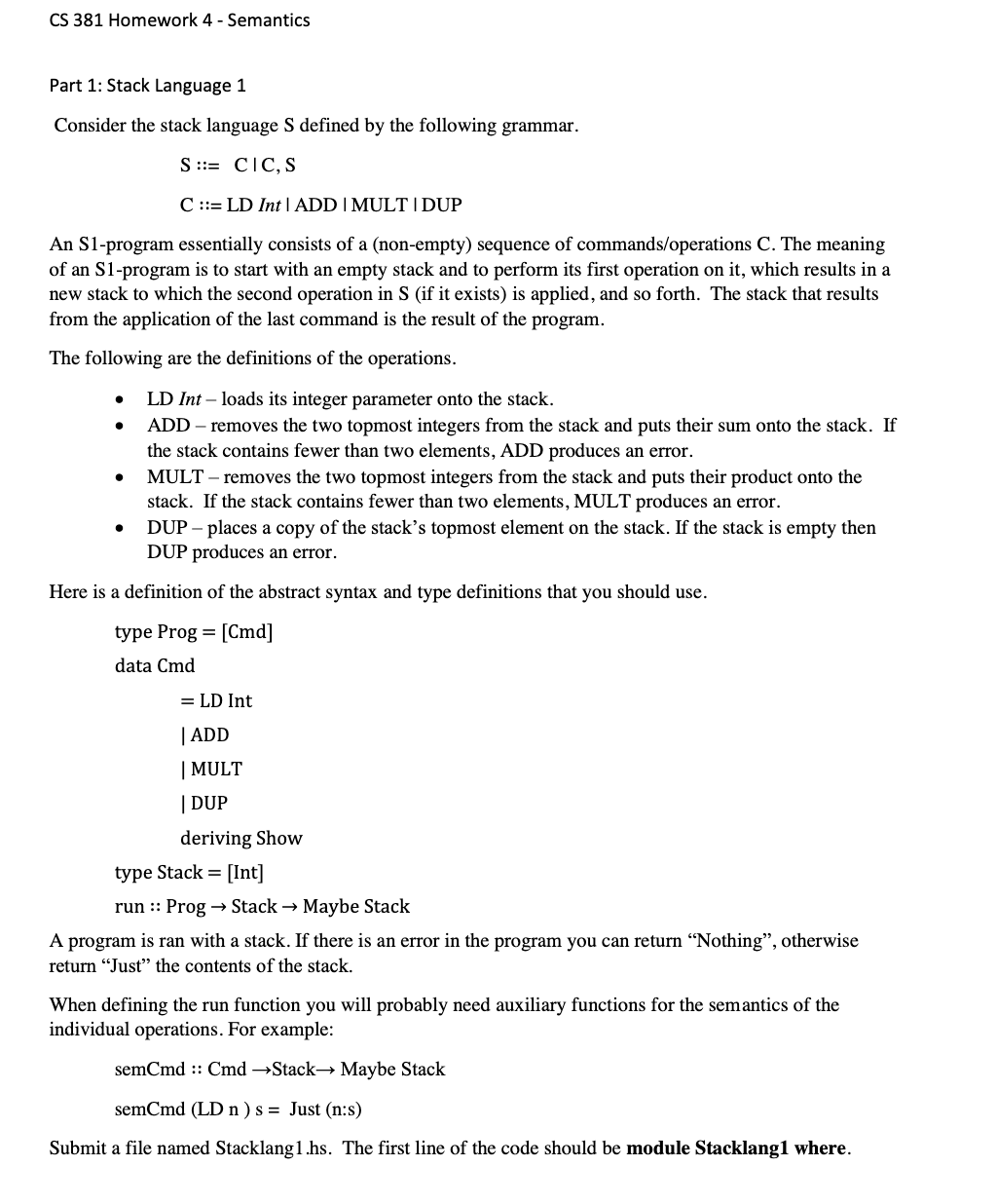Question
The verifier script is shown below. Please make sure it works with the verifier! The expected results are shown at the bottom. If you do,
The verifier script is shown below. Please make sure it works with the verifier! The expected results are shown at the bottom. If you do, I will be sure to upvote :)
| import Stacklang1 {- Test Cases for Part 1 Stack Language 1 Test by loading hw4p1verifier.hs Call function runAllTests Results Test 1: Just [36] Test 2: Just [13] Test 3: Just [10] Test 4: Nothing Test 5: Just [10,2,3,4,5] Test 6: Nothing Test 7: Just [1,1,1,2,3,4,5] -} s1 :: Stack s1 = [1, 2, 3, 4, 5] s2 :: Stack s2 = [10] t1 = [LD 3,DUP,ADD,DUP,MULT] t2 = [LD 3,ADD] t3 = [] t4 = [ADD, ADD, ADD, ADD] t5 = [LD 10, MULT] t6 = [MULT] t7 = [DUP, DUP] tList = [t1, t2, t3, t4, t5, t6, t7] sList = [[], s2, s2, [], s1, s2, s1] runAll :: [Stack] -> [Prog]->Int-> String runAll [] _ _ = " " runAll _ [] _ = " " runAll (s:ss) (p:ps) n = "Test "++show(n)++": "++show(run p s) ++ " " ++ (runAll ss ps (n+1)) runAllTests :: IO () runAllTests = putStrLn (runAll sList tList 1) -- --
|


Step by Step Solution
There are 3 Steps involved in it
Step: 1

Get Instant Access to Expert-Tailored Solutions
See step-by-step solutions with expert insights and AI powered tools for academic success
Step: 2

Step: 3

Ace Your Homework with AI
Get the answers you need in no time with our AI-driven, step-by-step assistance
Get Started


